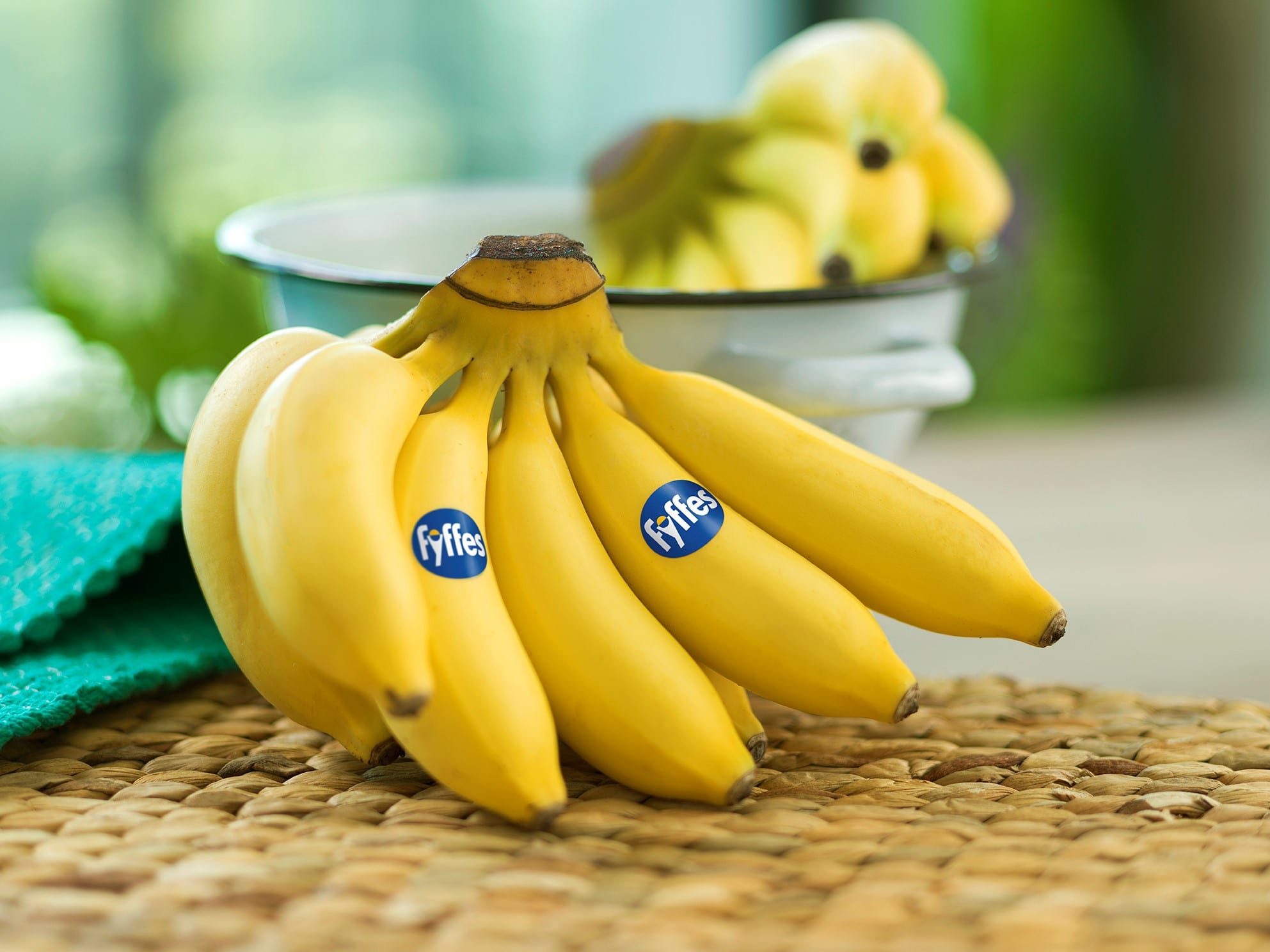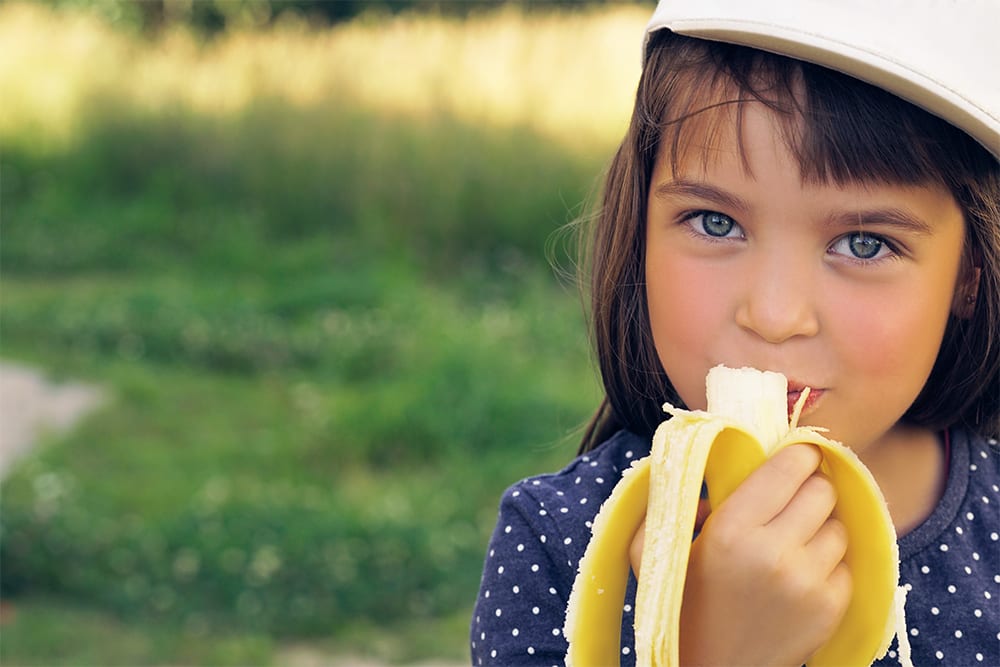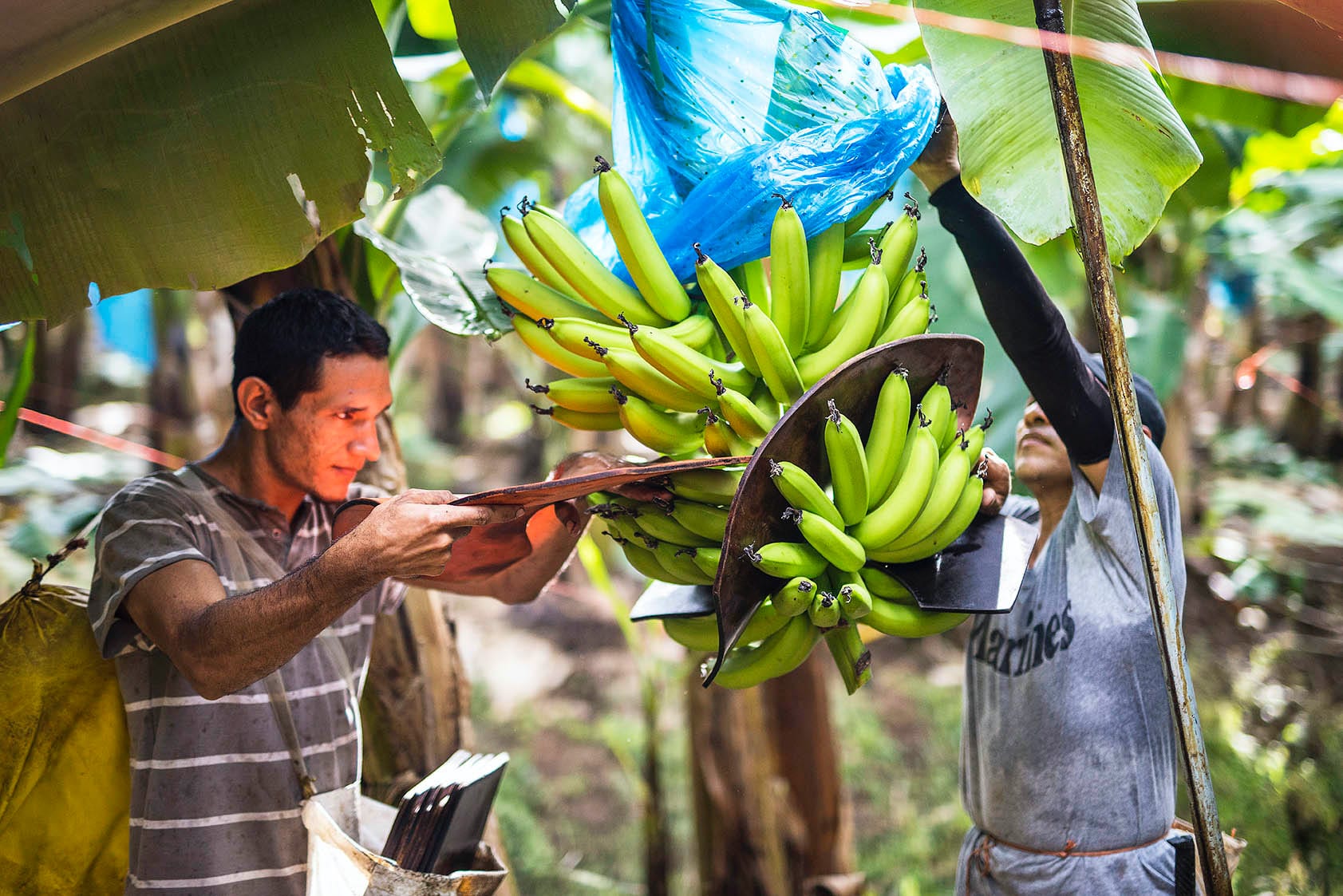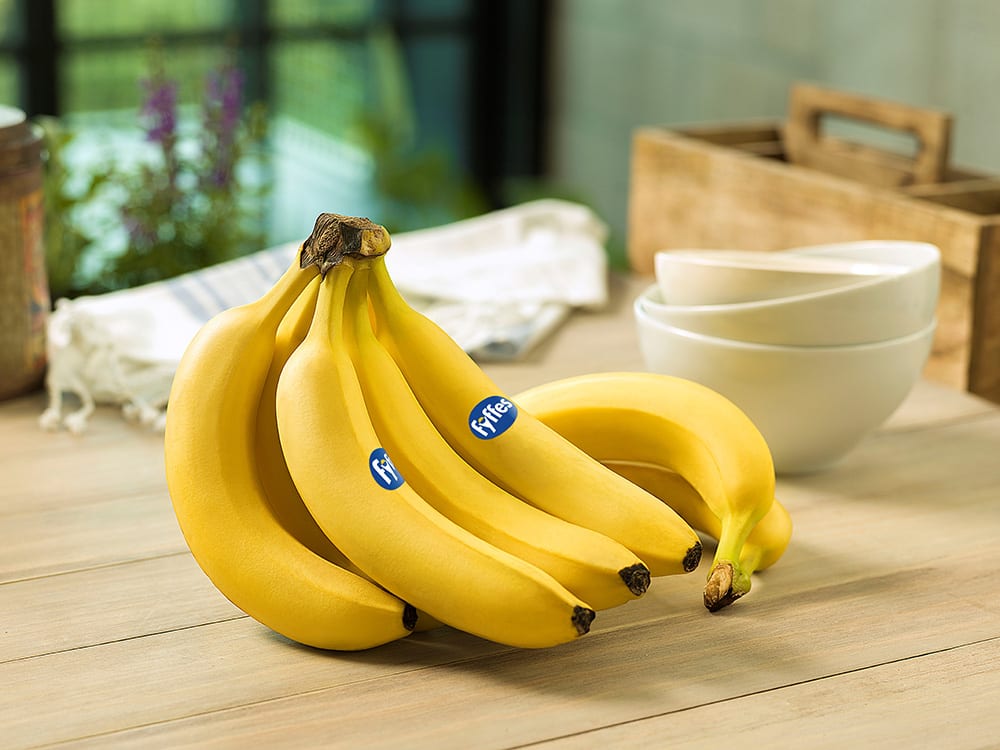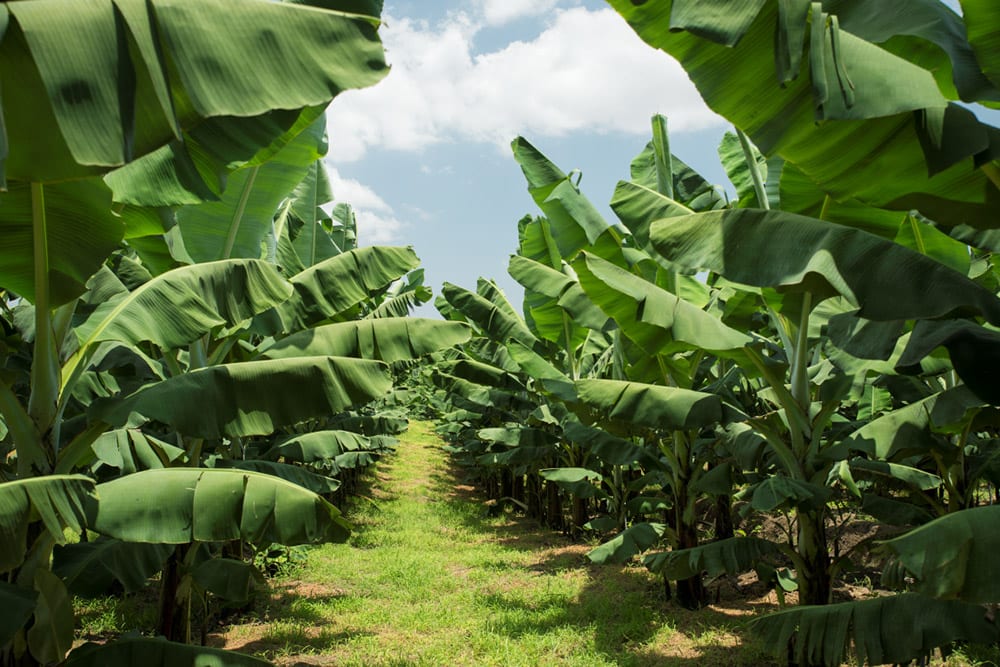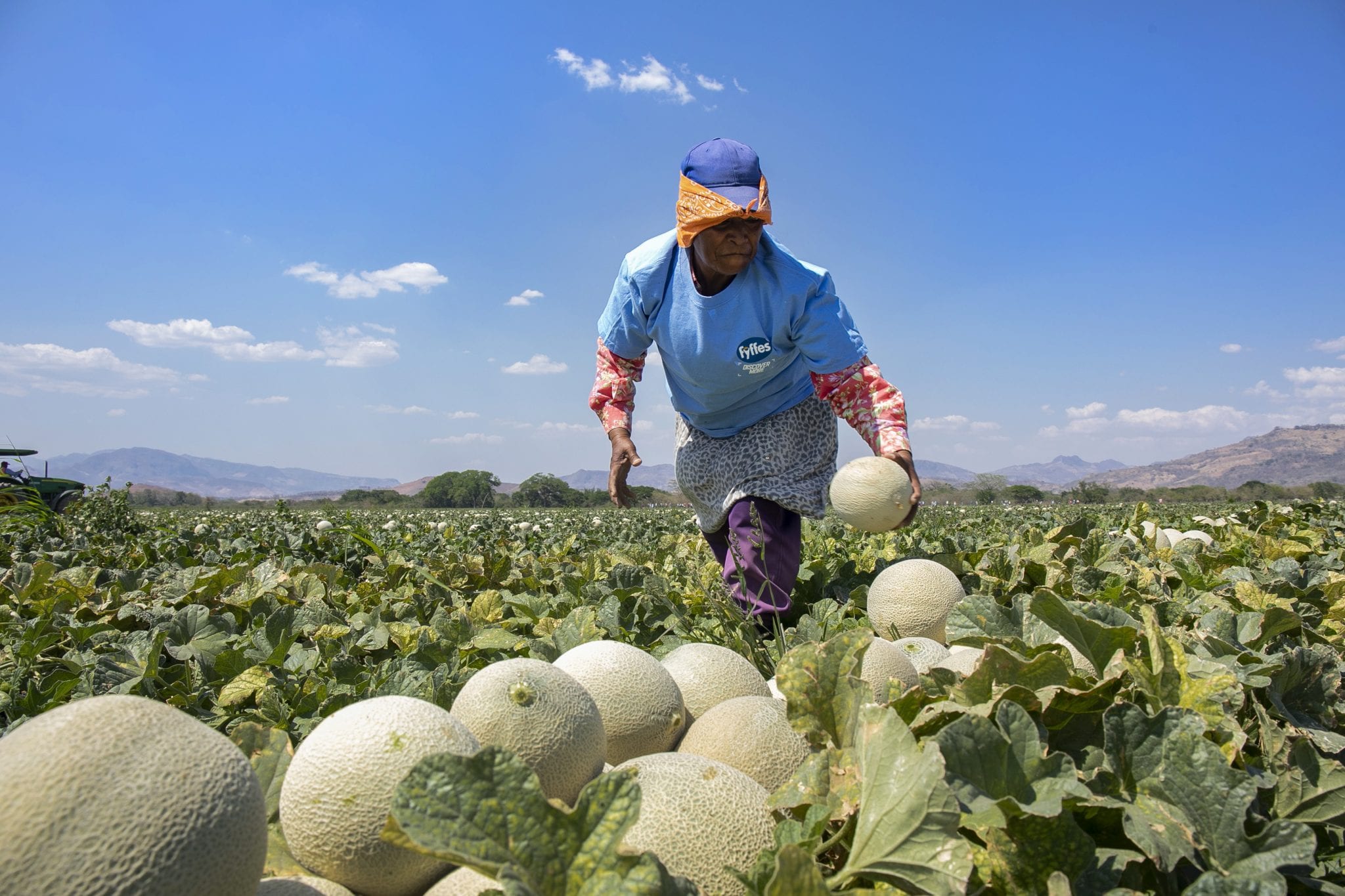Despite common belief, bananas don’t grow on trees but rather on plants, as they are in fact a giant herb! With the right care and attention, it takes a year for the baby plant to grow into a 3-6 metre-high banana plant. When the plant blossoms, the bananas appear. They start as tiny straight, thin fingers, but as they grow, they fill out and turn upwards, seeking out the sun, and start curving to take on their distinctive smiley shape!
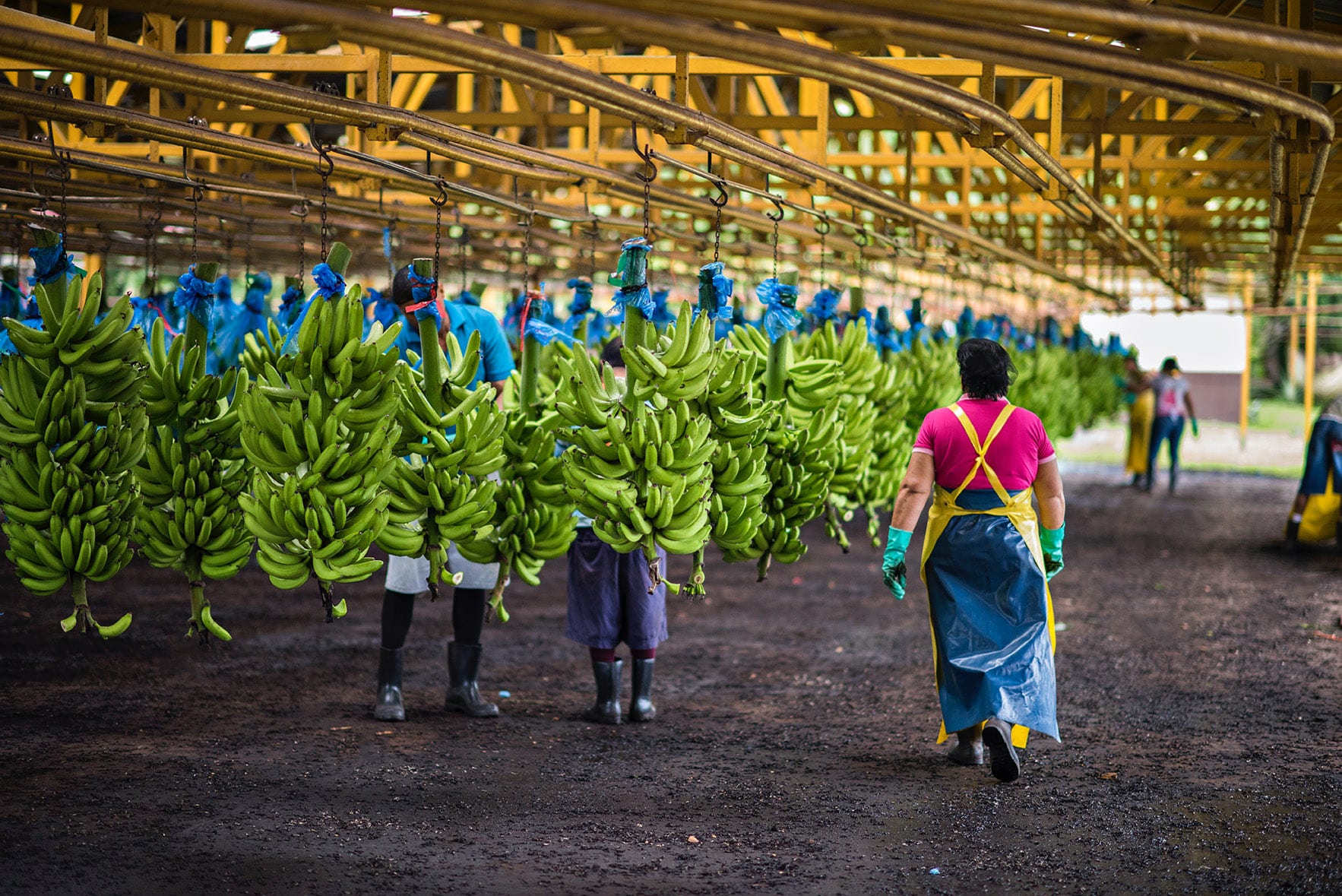
ONE OF THE WORLD'S FAVOURITE FRUITS
Bananas
Wonderfully sweet, firm and creamy, bananas are a favourite food for many, from young to old. They are available all year round and are a great source of vitamins and minerals, as well as fibre. Bananas are thought to have originated in Malaysia around 4,000 years ago but today are grown in most tropical and subtropical regions. Fyffes bananas grow in Central America, in countries such as Costa Rica, Belize, Colombia and the Dominican Republic.
The Banana Journey
-
How bananas grow
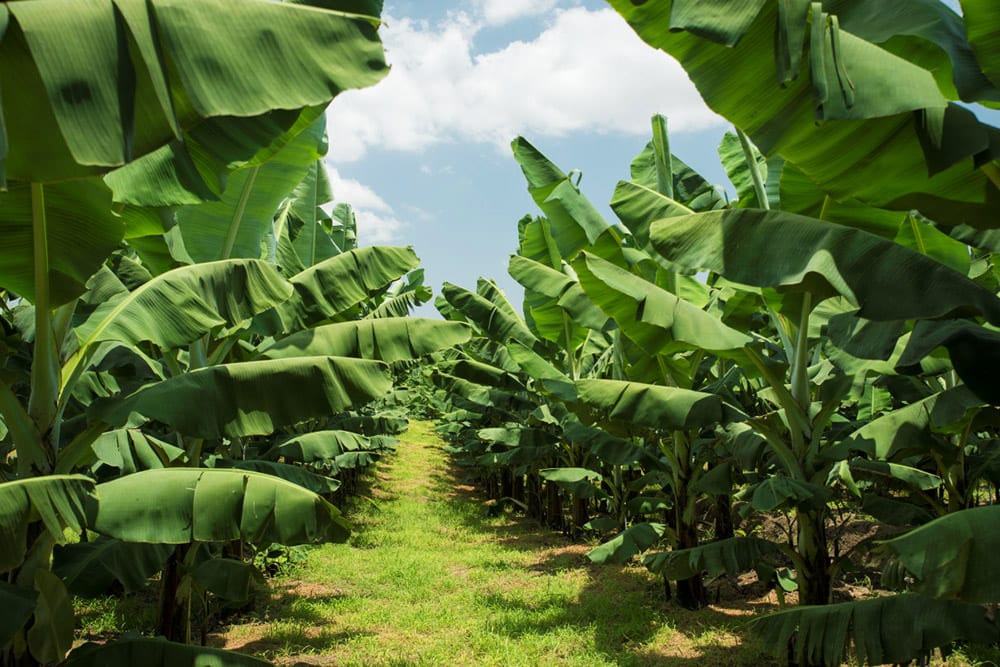
-
Keeping them safe
A special cover is wrapped around the fruit to protect it from wind and insects. Done properly, this creates a perfect micro-climate to help the fruit grow and stay in top quality condition. It also helps to avoid friction damage by leaves and aids in fruit development.
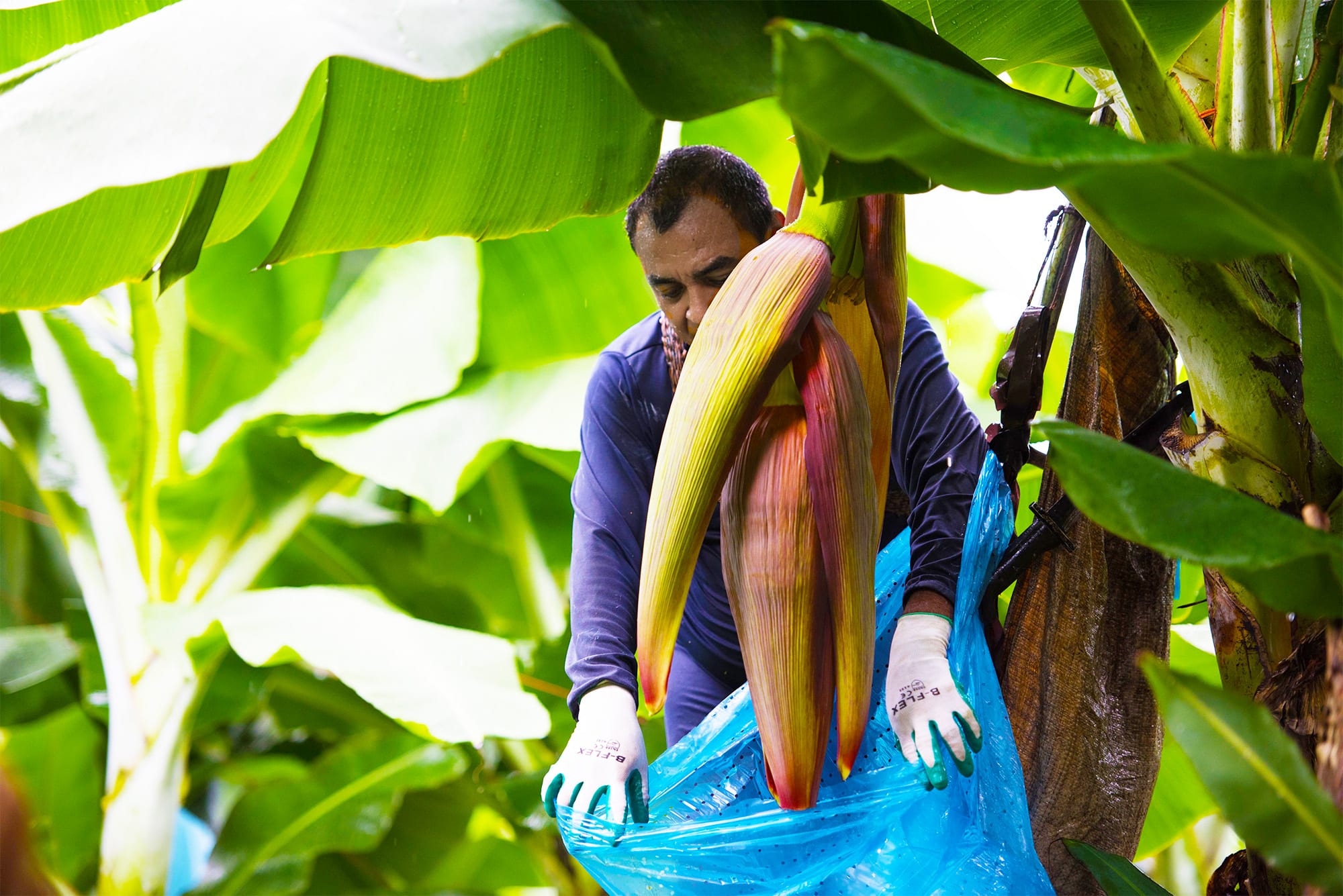
-
Harvesting by hand
Bananas are harvested when they are green. Each plant produces a single large stem carrying 100-200 bananas. Expert cutters select the fruit according to maturity, quality and thickness. Each stem is lowered gently onto the padded shoulder of a porter, who carries it a short distance to a cableway. A foam cushion is inserted between the “hands” to protect the fruit. Banana production is still very much a people business, as machines might damage the delicate fruit.
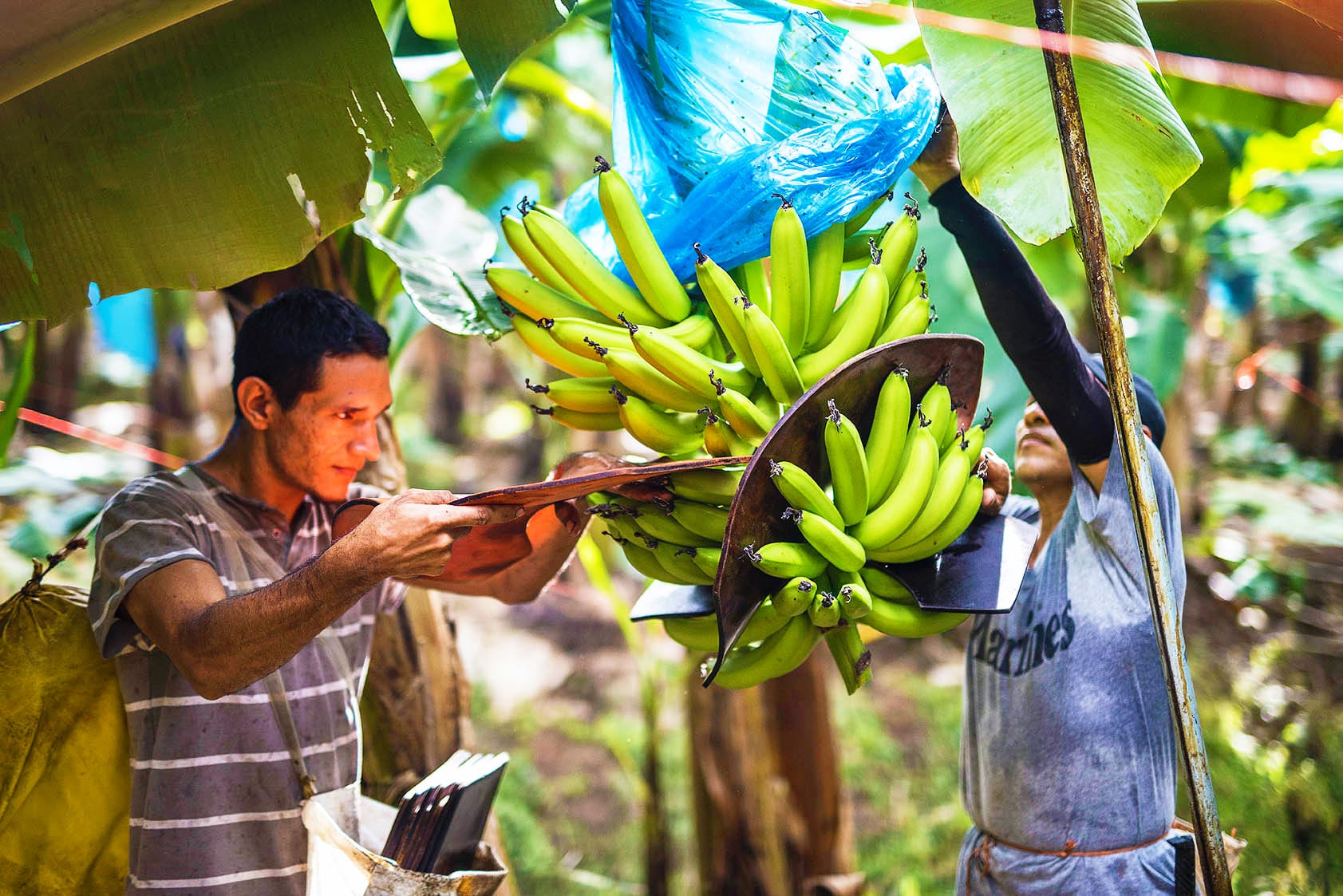
-
Inspected with care
The careful treatment of bananas is enormously important throughout the whole banana journey. Once the bunch is cut from the plant, a race against times begins as the bio-chemical process of the banana starts. Despite the need for speed, bananas must be handled with great care. Even the slightest pressure can cause brown, unsightly spots on the sensitive peel. In the packing house, thorough quality controls take place. Parameters like size, grade and peel damages are controlled.
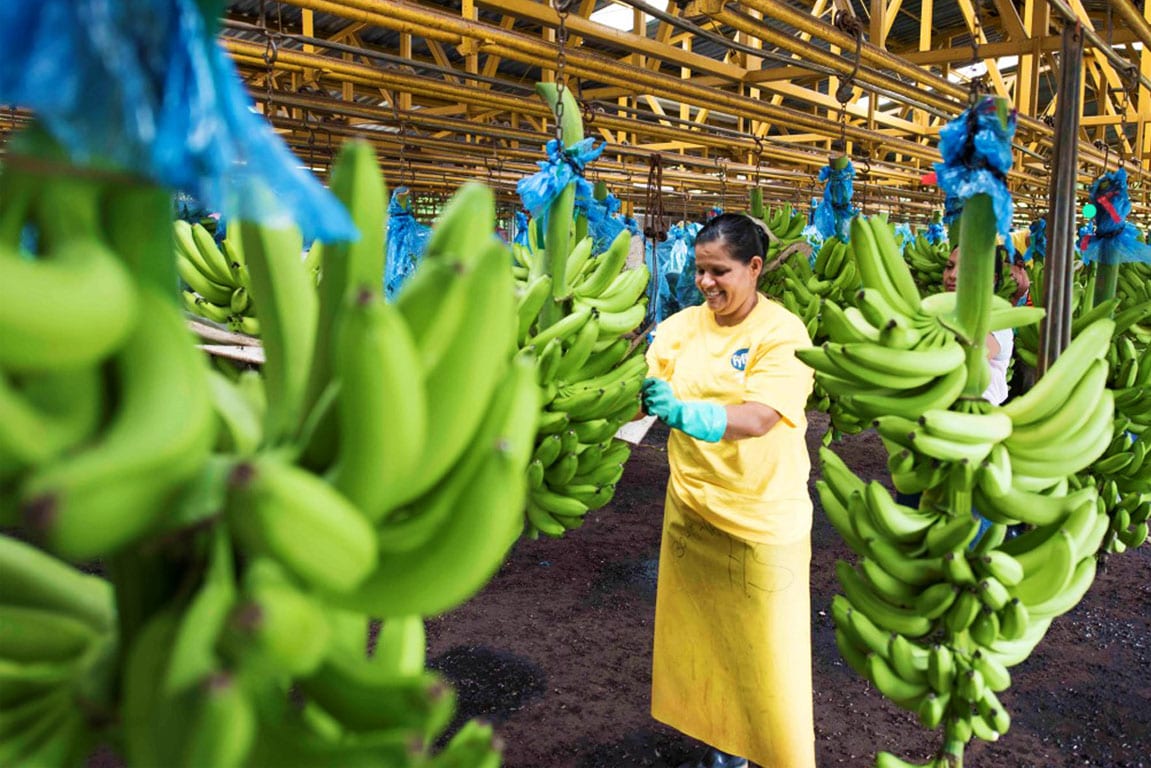
-
Washing our fruit
It’s important to wash the fruit to remove any residue and ensure it arrives in top condition. The bananas are washed twice, using recycled water. Unripened, green bananas exude a naturally-occurring latex which is removed by the water and has to be removed from the water before it can be used a second time. Recycling the water can reduce water use by up to 80%.
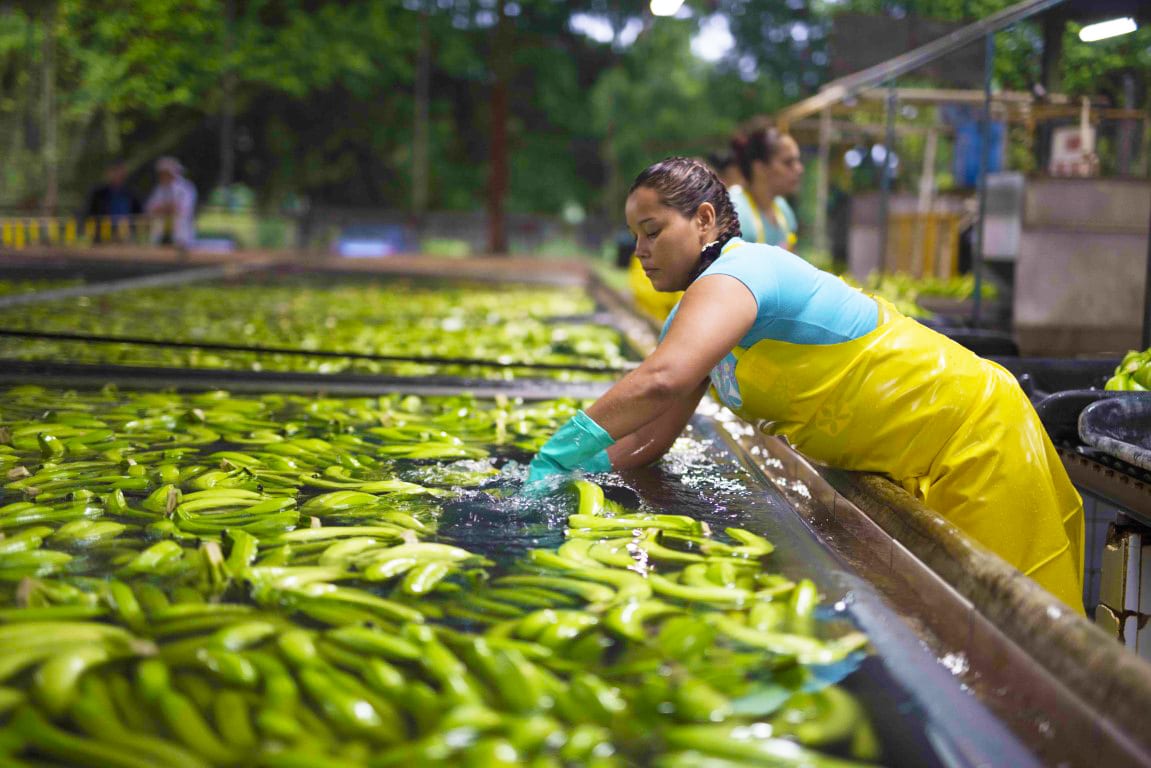
-
The packing process
Once washed, our bananas are packed (all by hand) into protective boxes or trays, ready for the voyage to their final destination in the markets. Only bananas that meet Fyffes specifications receive our symbol of quality - the Fyffes blue label - applied by hand to each cluster. (Don’t worry, all the bananas are used, but not all of them get our blue label).
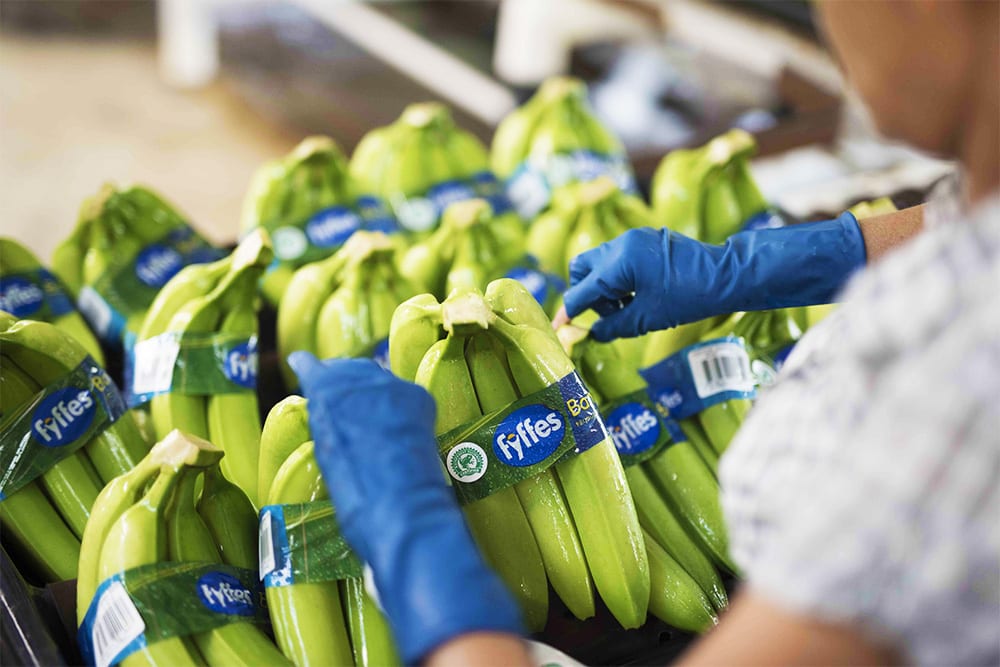
-
Sailing the high seas
We use ships with state-of-the-art containers that keep the fruit in a form of hibernation at a constant temperature of 13.5°C; just cool enough to slow down the ripening process but not so cold that the bananas become chilled. In this controlled atmosphere, the bananas will remain in perfect condition. The journey may take between 6 and 14 days.
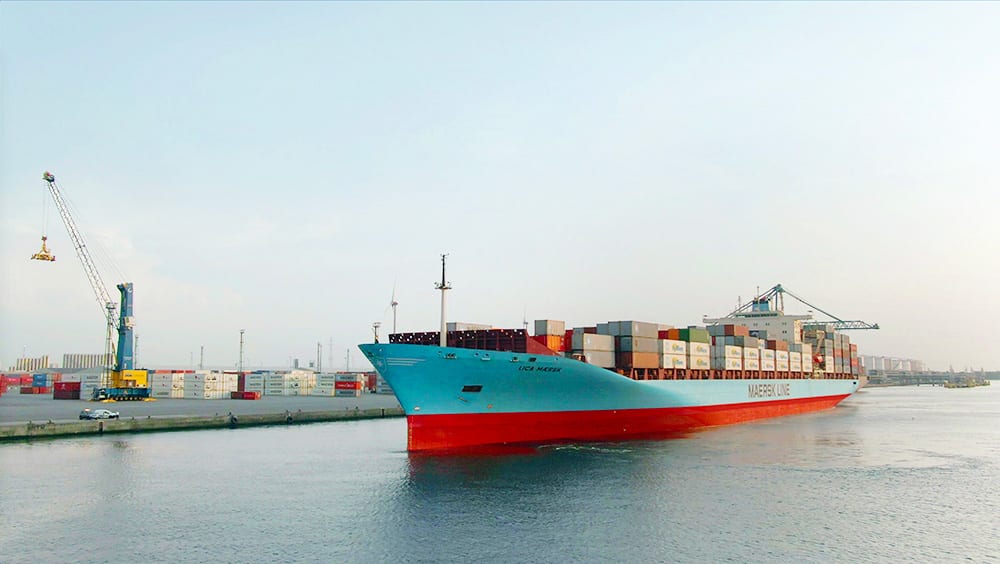
-
Ripening, from green to yellow
On arrival, the green bananas are sent to our special ripening centres where Fyffes teams check the fruit and decide how best to ripen it – every batch is different. Over 4-6 days, the starches within the banana begin to change into natural sugars and the green fruit ripens to a soft, creamy yellow. Only when they’re done will they leave our care and go to your local stores., from green to yellow
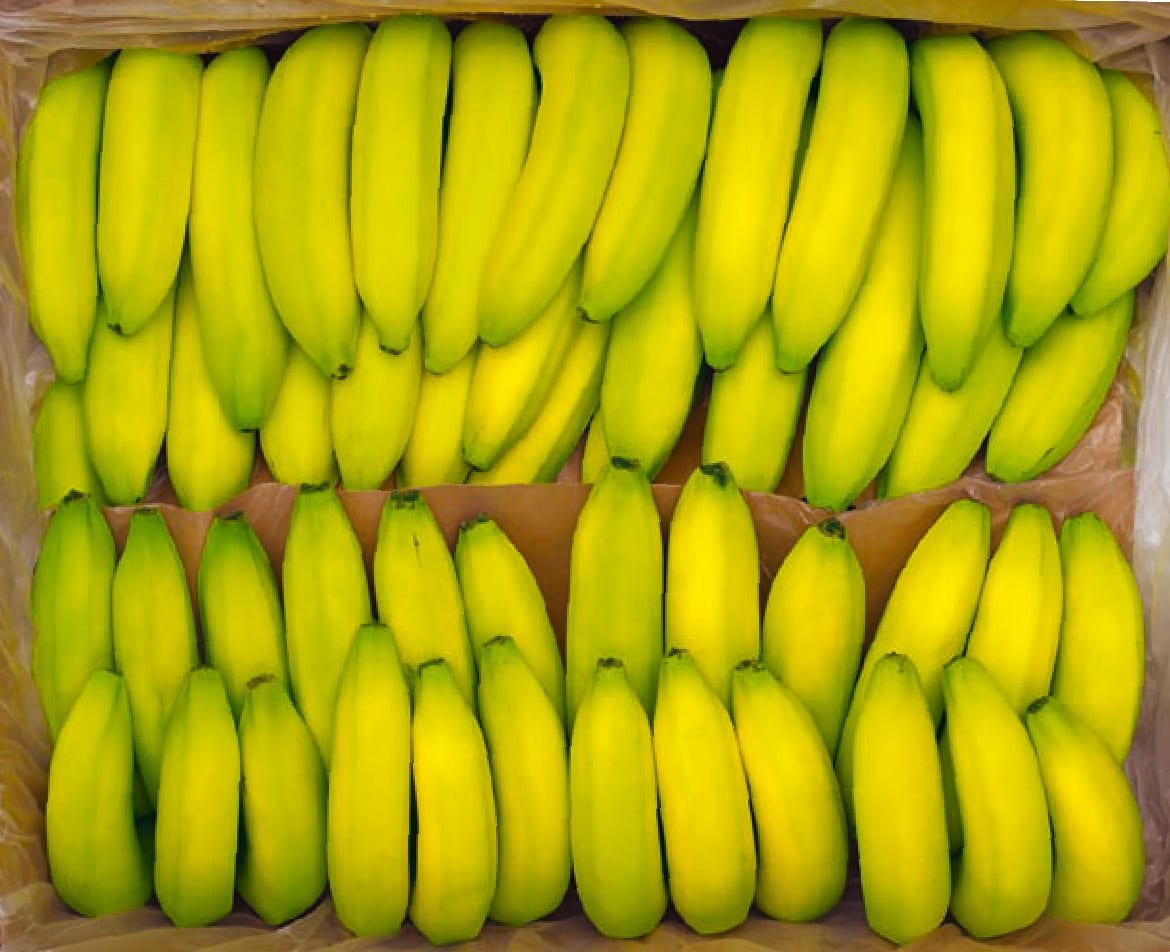
-
Homeward bound
Most of the time the fruit is delivered to the retailers a little bit under ripe, so that it will be just perfect when it reaches your home. Retailers can specify a particular shade of yellow based upon a Fyffes colour chart. We can even do a mix of green and yellow fruit – some to eat now and some to eat later.
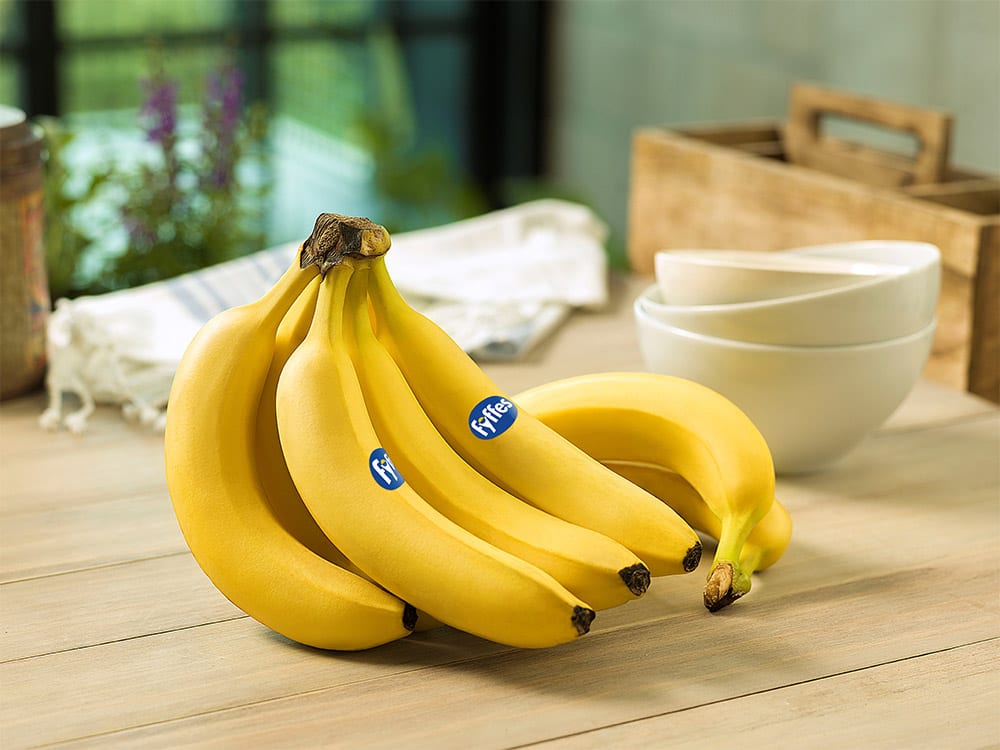
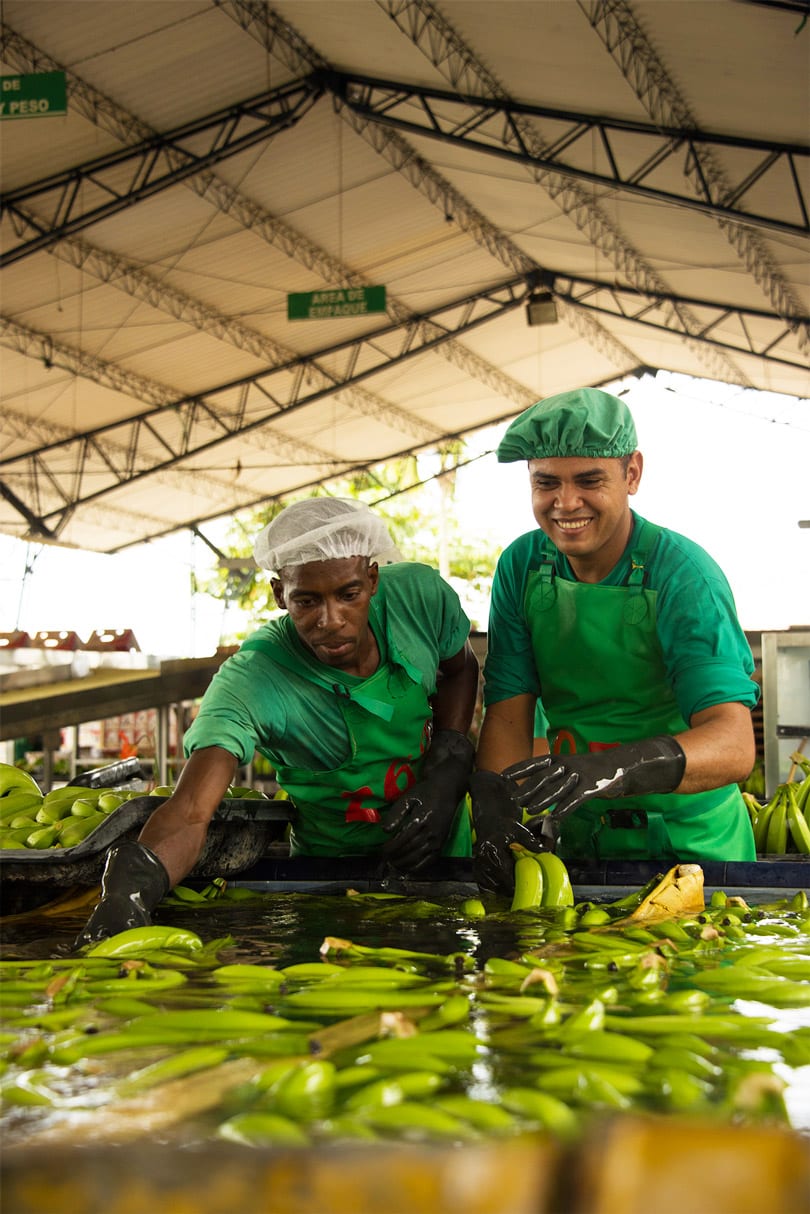
Organic & Fairtrade
It’s important to us that we act sustainably, so much of our fruit is organic or Fairtrade – we’re currently Europe’s biggest Fairtrade banana supplier.


Health & Nutrition
- Powerful Super Fruit – Bananas are an excellent source of potassium, fibre, vitamin B6 which can help boost your physical and mental energy. They provide the perfect mix of short and long chain carbohydrates as a slow release energy. As a result, the blood sugar level does not spike but remains stable for a long time. This means that the body is continuously supplied with energy.
- Eating bananas may help reduce exercise-related muscle cramps and soreness since they contain magnesium.
- Lift Your Mood – Bananas contain tryptophan, an amino acid that plays a role in preserving memory and boosting your mood.
- Bananas are relatively low in calories (only about 90 kcal and 0 g fat), high in fibre which makes them a weight-loss friendly snack option.
- Support Heart Health – Bananas are high in potassium and magnesium which helps regulate blood pressure and can lower the risk of heart disease.
The World of Bananas
Most of us think that a banana is a banana and they are all pretty much the same! Oh no they are not! There are more than 500 (some say 800) different varieties of banana in the world. At Fyffes, we are really into bananas – in all sorts of shapes, sizes, textures and even colours. Bananas can be broadly divided into two groups, the ‘fruit’ (or sweet) banana and the ‘vegetable’ (savoury) banana. Sometimes, we all fancy something a little bit different:
Plantains (Vegetable Bananas) 
Flavour-packed plantains are often called the “potato of the tropics”. Thicker, firmer and starchier than regular bananas, plantains are cultivated on small farms, which are usually family endeavours, thus vital to the economic and social infrastructure. The plantain is an extremely versatile fruit that can be prepared differently at every stage of ripeness. Although it’s a fruit, the plantain has to be cooked, much like a vegetable, and can taste sweet or starchy. Plantains provide a tasty alternative to potatoes, rice and pasta or as a dessert.

Intensely Sweet Baby Bananas 
The baby banana is a different variety called “Pisang Mas” and is the smallest banana of all varieties. They may be small, but they pack a lot of natural sweetness under their thin, bright skin. Some people even say they taste like cookie dough!

Delicately Flavoured Manzano Bananas 
A Manzano banana (“Apple Banana”) has a delicious, sweet taste with a hint of apple flavour. Wait to enjoy them until their skin has black spots – you can eat them as a snack or cooked in desserts.
Creamy Red Bananas 
A red banana has a creamy coloured flesh which is packed with extra vitamin C and beta-carotene. When ripe, fresh red bananas have a flesh that is cream to light pink in colour. They are softer and sweeter than the conventional yellow banana (“Cavendish variety”) with a slight hint of raspberry flavour and a creamy texture!

Manzano 
A Manzano banana (“Apple Banana”) has a delicious, sweet taste with a hint of apple flavour. Wait to enjoy them until their skin has black spots – you can eat them as a snack or cooked in deserts.
